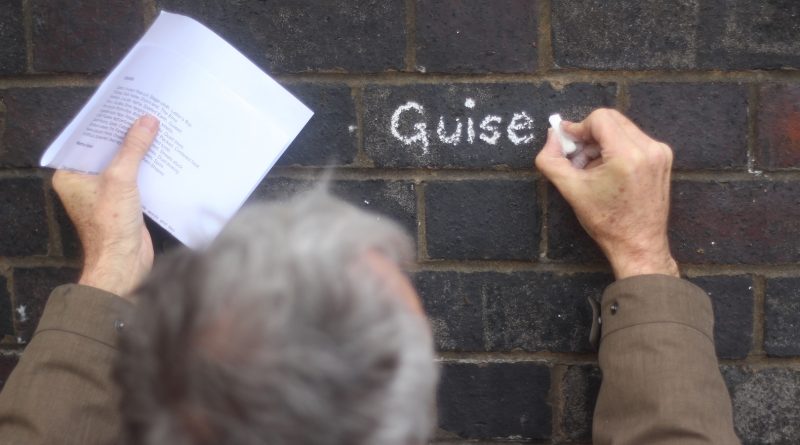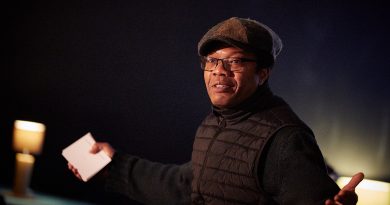Disappear Here Project Launch (The Box, Fargo, Coventry, 16 March 2017)
reviewed by Stella Backhouse
Known for his ambivalence towards the city of his birth, Philip Larkin’s best known work about Coventry is a poem called ‘I Remember, I Remember’. It’s appropriate then, that memory is a key theme in the twenty-seven short poetry films premièred last week as part of the Disappear Here project. The films are the result of a year-long collaboration between nine poets and nine filmmakers who were organised into pairs and tasked with producing three films per pair around the subject of the iconic A4053 Coventry Inner Ring Road.
In Sarah James and Ben Cook’s film ‘From and Before’, the ghosts of ancient settlement (‘Whitefriars, Hillcross, Whitefriars, St John, Patrick and Nicholas’) loom through the confident post-war palimpsest of traffic-management solutions made from concrete (‘Ringway’). In a snatch of everyday poetry reminiscent in its sing-song of the shipping forecast, the repetitive naming of the road’s various sections mixes with the fug of boredom, familiarity and grudging affection until road and identity blur into one another.
This fusion between self and environment is mirrored in by the eternal O of the road around the city, which many of the artists take as their starting point. We see it re-imagined as a noose, an ouroboros, “the city’s clockface” (Sarah James and Ben Cook, recalling the city’s watch making past) and “a spheric shape, the snake that takes us home from work and back again” (Emilia Moniszko and Mab Jones). In further comparing it to the nearby – but buried – River Sherbourne, Cook and James drop hints, perhaps, that you can never drive along the same Ring Road twice.
This monolithic – but simultaneously transitory – nature of the Ring Road is one of the many contradictions captured by these films about the road Coventry loves to hate. In their ‘Lane/Lone/Loon’ sequence, Sangham Sharma and Cormac Faulkner use repetition of scenes shot on the Ring Road and ever-closer focus on a single, ambiguous point to explore the concept of trajectory without movement. Other contributors use as metaphor the ephemera of language itself.
In ‘Penvorn’ (the ominous, heavy-O’d name of Philip Larkin’s childhood home, demolished to make way for the road), Emily Wright and Martin Green take isolated words, some of them from Larkin’s essay on Coventry, Not the Place’s Fault and reproduce them in fragile chalk on bricks surrounding the road. Who knows if these same words have been spoken in now-lost conversations in a car as it sped past? Dara Mortimer and Richard Hourguez picture such conversations as not lost for all time, but instead decaying in a kind of word compost at the roadside, recycled into its story.
In ‘Granulitic’, Zoe Palmer and Brian Harley take this idea of language as the road’s alternative architecture a stage further. The repetitive, almost reverential whispering of the single line
transom deep-rooted into granulitic screed
conjures up columned vistas, cathedral-like in their grandeur, of the road’s underside viewed from Gosford Street. Returning to the theme in ‘Cov Glossolalia’, Wright and Green (or is it a machine?) read out the number plates of passing vehicles as if they were words, articulating for the road its own strange language, fragmentary and depersonalised – but deeply human in its urge to label and record.
The identity of Coventry is bound up in the road, just as the road is bound up in the city. But the face of Coventry continues to change – in the past couple of years, Junction 6 has been largely demolished. Many of the artists seem to be asking how this constant re-invention affects identity as constructed through memory.
In ‘Remember’, Mab Jones and Alex Taylor scan over the modern city as from a low-flying aircraft, to a sound track of Beethoven’s Moonlight Sonata (the code name of the Coventry raid). But instead of the wreckage wrought be war, we are now presented with the shell of Spire House on New Union Street, recently flattened to make way for a new water park. “Can you remember who you are?” asks the poet.
With the growth of its two universities and its bid for UK City of Culture 2021, the hope is that Coventry can forge for itself a new identity based on knowledge and the arts. On the whole, the poets seem hopeful. The road, in all its circularity, is also a symbol of renewal.
Cook and James see “thousands of tyres turning towards the future”, while John McCaughley and James Grady ask if the city will
begin again just where it ended…ending at the start of it, or spin us into something new.
Right now ‘our Coventry’ is “caught between memory of a city and what it’s become”, but in the face of change the consensus seems to be one of equanimity: “indicate, hold the lane, grow up” – drive on and merge with the traffic.
Image supplied by organisers




